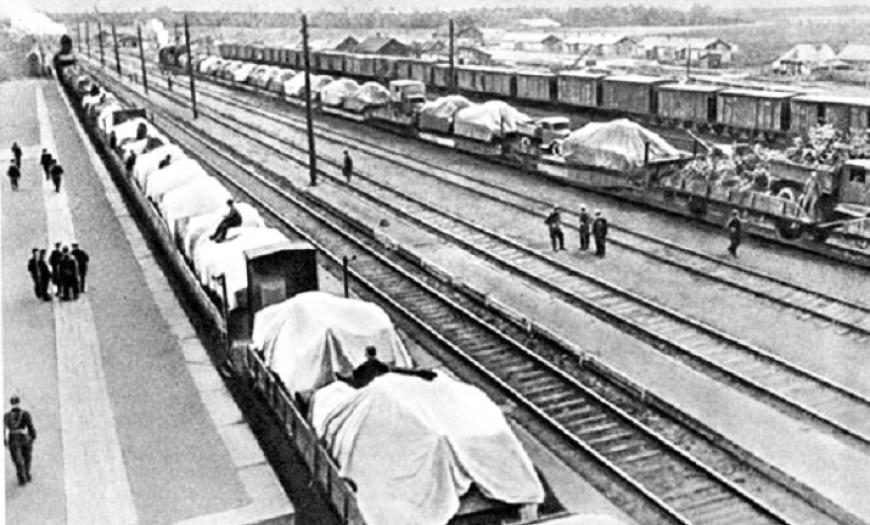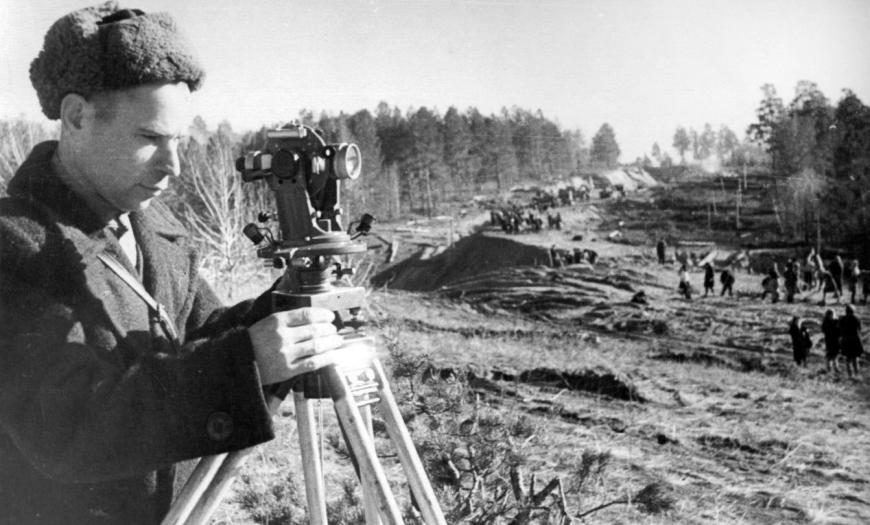During the Great Patriotic War, with the participation of Lentransproekt employees (since 1951 - Lengiprotrans), the Stalingrad - Saratov - Sviyazhsk railway line was designed and built to solve the most difficult problem of delivering material resources to the Stalingrad Front.
In the summer of 1942, German troops came close to Stalingrad, cutting off all railways to the city along the right bank of the Volga. The State Defense Committee urgently decided to build a front-line highway for communication with the city along the right bank of the river.
The design of the route as a whole and the most important southern section of Stalingrad - Ulyanovsk was headed by the chief engineer of Lentransproekt in 1937-1938 P.K. Tatarintsev. The design of the northern section Ulyanovsk - Sviyazhsk was supervised by N.I. Makkoveev. The construction of the road was entrusted to the Main Directorate of Railway Construction of the NKVD and "Bamproekt" under the leadership of General F.A. Gvozdevsky.
The line was designed as a single-track highway according to specially developed standards, taking into account the wartime situation. Despite the tight deadline, two plans for the future route were developed and reviewed. Prospectors and designers, as the work was completed, became foremen on construction sites. Most of the road was built by prisoners of the GULAG, the Volga railroad forced labor camp was formed. In March 1942, on the orders of the regional committees of the All-Union Communist Party of Bolsheviks, local residents were mobilized for construction.
The work was carried out in conditions of a shortage of construction equipment and materials, and above all, sleepers and rails. To solve the problem, by order of the State Defense Committee, 180 km of BAM and the Izvestkovaya - Urgal line were dismantled. The track was equipped with the simplest devices that meet the needs of wartime: these are overhead communication lines, telephone communications, semaphore signaling, an electric wedge system, and semi-automatic blocking. Most of the bridges were built of wood, and the Gau trusses were used at large crossings. The progress of the work was complicated by the constant shelling of the Nazis. Despite the difficult conditions, construction was carried out at an intensive pace, about 8 km of tracks were laid in a day.
On August 7, 1942, the first train passed through the Ilovlya - Petrov Val section. Working traffic on the highway opened on October 15, 1942 at a speed of up to 30 km / h. The entire line was finally commissioned on November 1, 1942. A circular traffic pattern was used on the track, which made it possible to increase the throughput from 16 to 22 trains per day.
The 1,000-kilometer highway was laid in record time - in just 8 months. Up to 40 thousand soldiers were delivered by rail to the Stalingrad Front. wagons with troops and equipment and removed from there 600 steam locomotives and 26 thousand. wagons with the wounded and equipment. The new road, which became known as the Volga Rokada, largely contributed to the victory in the Battle of Stalingrad, which became a turning point in the Great Patriotic War.
The railway line was used after the end of the war. At present, the Saratov - Volgograd section is included in the Kuzbass - Azov-Black Sea transport hub direction.



